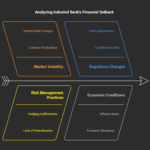In the ever-evolving landscape of the global economy and capital markets, the past 5-10 years have witnessed profound transformations that have left an indelible mark on the Indian market. These changes have been driven by a confluence of factors ranging from technological advancements and policy shifts to evolving consumer behavior and geopolitical dynamics. This article delves into the pivotal changes that have shaped the Indian market within the context of the broader global economic and capital market shifts.
Introduction
The last decade has brought about sweeping changes in the global economy and capital markets, with India experiencing its own unique set of transformations. From the integration of advanced technologies to the emergence of new market players, the dynamics of the Indian market have been significantly altered.
Technological Disruption and Digitalization
The advent of the digital age has catalyzed a technological revolution, redefining how businesses operate and consumers engage. With the proliferation of smartphones and affordable internet connectivity, India has witnessed an exponential rise in digital services, leading to increased access to information, e-commerce, and online financial services.
Policy Reforms and Regulatory Changes
To foster economic growth and attract investments, India embarked on a series of policy reforms. Initiatives like “Make in India” aimed to boost domestic manufacturing, while the implementation of the Goods and Services Tax (GST) streamlined taxation. These reforms have sought to enhance the ease of doing business and create a more investor-friendly environment.
Shifting Trade Dynamics and Geopolitical Realities
Global trade dynamics have evolved, impacting India’s export and import patterns. Additionally, changing geopolitical dynamics have prompted India to diversify its trade partners, reducing dependency on specific regions and countries.
Changing Consumer Behavior and Market Trends
The modern Indian consumer is discerning and digitally connected. This shift has led to a surge in demand for personalized products and online shopping experiences. The e-commerce sector has flourished, reshaping the retail landscape.
Infrastructure Development and Urbanization
Rapid urbanization has driven the need for improved infrastructure. Initiatives like “Smart Cities” have aimed to create urban centers equipped with modern amenities, opening avenues for investment in real estate and urban infrastructure projects.
Emerging Sectors and Investment Opportunities
Traditional sectors like IT and pharmaceuticals continue to thrive, but new areas such as renewable energy, electric vehicles, and biotechnology have gained prominence. These emerging sectors offer exciting investment prospects.
Foreign Direct Investment (FDI) Trends
India’s liberalized FDI policies have attracted substantial foreign investments across various sectors. The relaxation of investment norms has led to increased international collaboration and technology transfer.
Sustainability and Environmental Considerations
Environmental consciousness has grown, influencing consumer choices and business practices. India’s commitment to sustainability is evident through initiatives like the International Solar Alliance, promoting renewable energy adoption.
Reshaping the Financial Sector
Fintech innovation has disrupted traditional banking models, promoting financial inclusion and expanding access to credit. Digital payment platforms have gained traction, transforming the way transactions are conducted.
Currency Fluctuations and Exchange Rate Trends
Currency fluctuations have posed challenges for businesses engaged in international trade. Monitoring and managing exchange rate risks have become crucial for maintaining financial stability.
The Role of Startups and Entrepreneurship
The startup ecosystem in India has flourished, encouraged by government support and venture capital investments. This ecosystem has fostered innovation and job creation, positioning India as a hub for entrepreneurship.
Challenges and Uncertainties Faced by the Indian Market
Despite progress, the Indian market grapples with challenges such as income inequality, infrastructural gaps, and regulatory complexities. Additionally, global uncertainties, like the recent pandemic, have exposed vulnerabilities.
Navigating the New Normal: Strategies for Businesses
In the face of change, businesses must adopt agile strategies. Embracing digital transformation, diversifying supply chains, and investing in employee reskilling can enhance resilience and competitiveness.
Conclusion
The past 5-10 years have witnessed transformative shifts in the global economy and capital markets, and India’s market has been no exception. As the nation navigates a new era, adaptability and innovation will be key to seizing opportunities and overcoming challenges.











